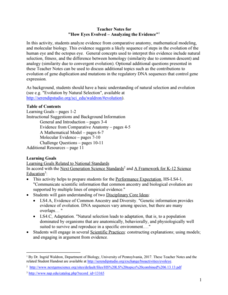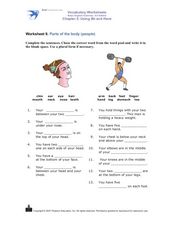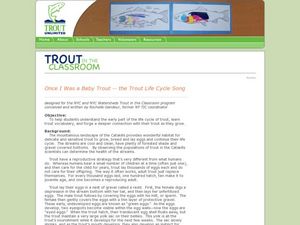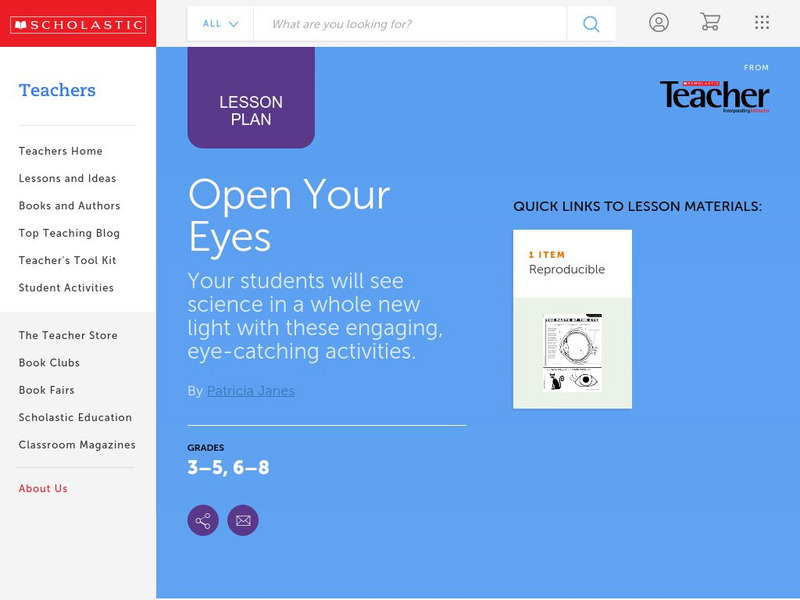Serendip
How Eyes Evolved – Analyzing the Evidence
Octopodes existed for hundreds of thousands of years before humans, yet our eyes share many similarities. Scholars analyze the evidence to determine if the evolution of eyes best fits a homology or analogy model. They discuss the issue...
Baylor College
Drugs, Risks and the Nervous System
In cooperative groups, middle schoolers contemplate the probability of 18 different situations occurring. After they make predictions, they compare them to the actual risk factors. This eye-opening exercise demonstrates that the odds of...
California Academy of Science
Color Vision Genetics Evolution Simulation
At one point, all mammals carried only two color receptors, but now most humans carry three. An informative presentation and hands-on activity demonstrate how this evolved through genetics. By participating in the activity, pupils...
ReadWriteThink
Teaching Point of View With Two Bad Ants
What better way to explain the concept of point of view than from an ant's perspective! After reading Two Bad Ants, pupils identify the point of view of the ants by studying the text and pictures. Then, they fill out a...
Curated OER
Parts of the Body (People)
In this human body parts worksheet, learners read the names of 14 basic body parts. Students use these words to complete 14 sentences.
Curated OER
Reproduction and Development
Have a sense of humor when discussing human anatomy with your class! Through puzzles and riddles, learners become comfortable with words relating to reproduction and development. They combine mixed up words from the "vocabulary gene...
Curated OER
Sight and Light
Middle schoolers examine the eyeball and its parts. In this sight lesson students divide into groups and complete a lab activity that includes creating a model.
Curated OER
Worksheet 13: Clothes, Shapes, Parts of the Body
In this clothing words instructional activity, students analyze 5 picture clues and sentences, and for each, cross out the word that is incorrect in each set of parentheses. Each picture/sentence pair pertains to shapes or articles of...
Curated OER
Parts of the Body (People)
In this nouns worksheet, students complete 13 sentences by filling in the blanks with the correct word from the word pool and use the plural form if necessary.
Curated OER
Bird Beak Buffet
Students complete an activity that allows them to better understand that birds traits are closely related to what they eat, where they live, etc. In this bird trait lesson students complete an activity, create a data board and...
Curated OER
Genetics
Students create a checklist of traits common in all of their families. Uisng a table, they compare and contrast their family members to non-family members. They also review dominant and recessive traits and discuss how knowing about...
Curated OER
Microorganism Multiplication
Sixth graders conduct experiments with yeast to study characteristics of microorganisms. They, working is small groups, change the variables in the experiments and note the results which they later discuss as a class.
Curated OER
Once I Was a Baby Trout
Young scholars sing a song about the trout life cycle. In this trout life cycle lesson plan, students learn trout vocabulary and make motions while singing this song.
Curated OER
Moving Lines
Students gain an introduction to gestural line drawing along with art history correlations. They are encouraged to focus on the energy, mass, and expression of the subject rather than on illustrated replication.
Scholastic
Scholastic Instructor: Open Your Eyes
This webpage is a great resource for elementary teachers who are looking for activities, lessons, facts, and experiments pertaining to the eye.














